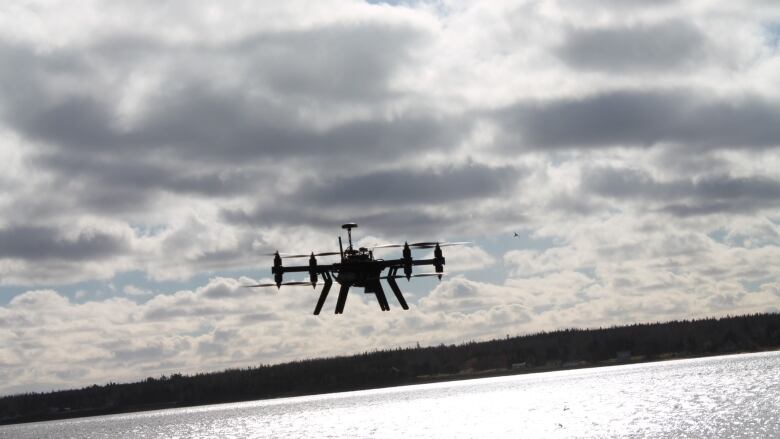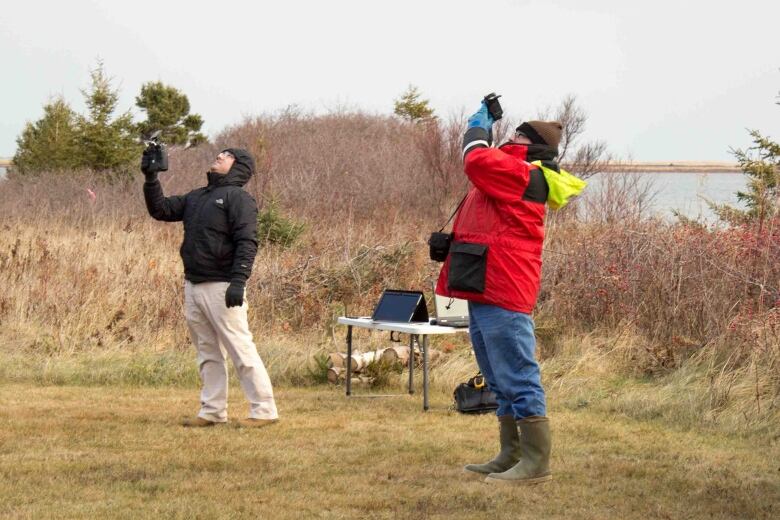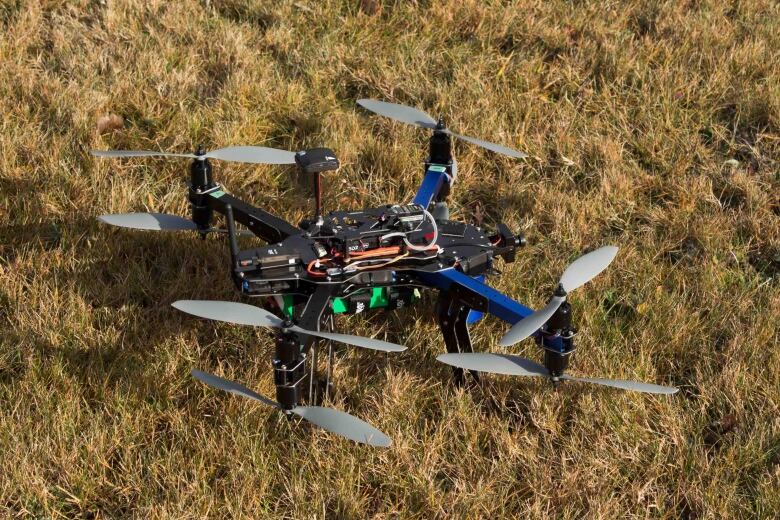Drones work to drive hungry sea ducks from mussel socks
P.E.I. Aquaculture Alliance to try again with modified drone that can withstand harsh conditions

Tests last fall to see if an aerial drone would drive away sea ducks as they help themselves to cultured mussels has met with "moderate success," says the P.E.I. Aquaculture Alliance.
"There just wasn't the amount of sea ducks this year at that time as there had been in previous years. But we still had some to try it out," said executive director Matt Sullivan.
"Also the weather was poor. So that's also not great when flying drones."
Growers say the ducks have been eating mussel seed small mussels of one or two centimetres, also known as spats that are grown on long mesh socks hanging from buoys.
Growers have tried to get rid of the ducks using underwater speakers, kites and flashing lights without much luck.
The drone tests took place the week of Nov. 23 in Rustico, St. Peters and St. Mary's Bay, Sullivan said.

A modified drone
Despite the setbacks, Sullivan said the few trials they were able to perform "seemed promising."
It took a few circuits of the drone to get the ducks moving, but they did leave the area, he said.
"We are actually going to be doing another version of the trials. We are currently looking at modifying a drone that is more built to work in these environments such as being able to withstand better wind and stuff like that."
The group will be working directly with the drone manufacturer to build something more suitable, said Sullivan.
He expects the next trials will concentrate in just one area for a longer period of time. The timing of the tests depends on funding, he said.













_(720p).jpg)


 OFFICIAL HD MUSIC VIDEO.jpg)
.jpg)



























































































